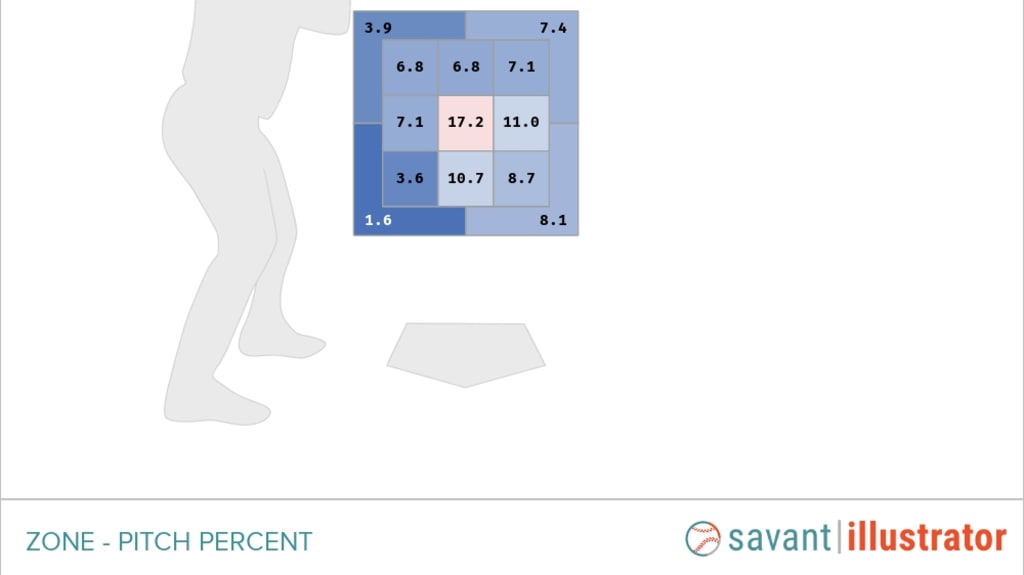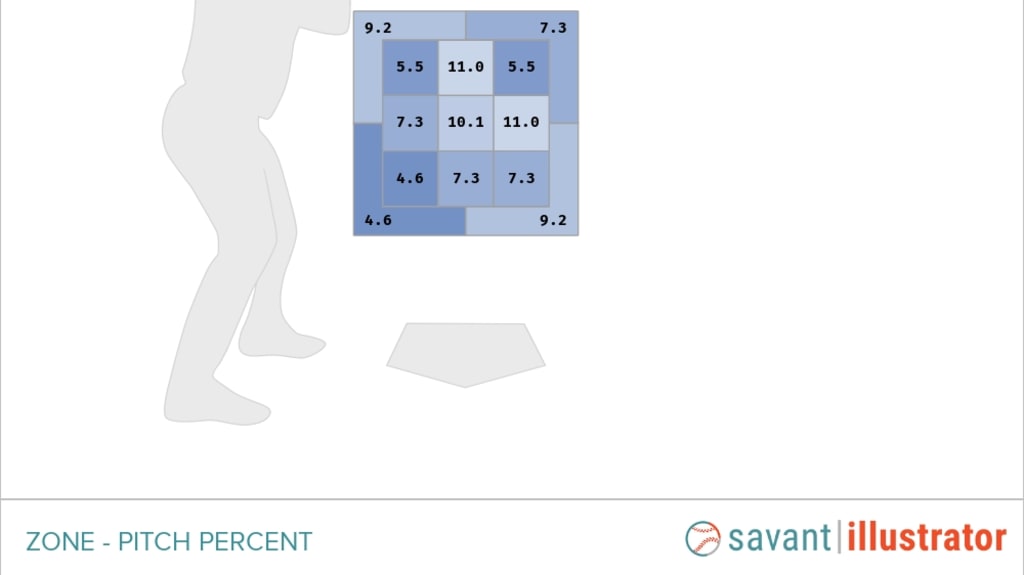This story was excerpted from Do-Hyoung Park’s Twins Beat newsletter. To read the full newsletter, click here. And subscribe to get it regularly in your inbox.
There’s a reason Jose Miranda seemingly came out of nowhere in his development to become an offensive juggernaut who put up video game numbers in the Minor Leagues in 2021 and asserted himself as a core piece of the team’s future: The Twins worked with him to really focus on swinging at pitches he can hit for damage.
That’s the skill that he really honed that year, when he became the organization’s Minor League Player of the year by hitting .344/.401/.572 with 30 homers and 32 doubles, nearly doubling his previous career-high in long balls. That year, he eclipsed his previous career-high batting average by 61 points and added 88 points to his previous high-water mark in slugging percentage -- and those had come in Rookie ball.
It’s that selective aggression that brought Miranda to the big leagues in 2022 and pushed him to the everyday third-base job as a middle-of-the-order hitter entering ‘23. And it looks like getting away from that selective aggression was a factor in Miranda being optioned to Triple-A St. Paul for a reset on Wednesday amid prolonged struggles to begin the year.
“When you talk about approach at the plate, ultimately what it looks like is certain swings and swing decisions … things like that,” manager Rocco Baldelli said. “That only happens when you go up there and you alter your mindset and your approach when you step up to the plate. I think that’s going to be part of it.”
In this era of high strikeout rates, it’s easy to laud a hitter who can avoid the strikeout and put the ball in play more often. But the challenge is that being able to make contact with bad pitches also leads to bad batted balls -- the type that go for outs, and not the type that go for extra-base hits.
If another hitter decides to swing on a pitch that’s not in his sweet spot, he’s perhaps more likely to just swing through it and extend the at-bat to see another pitch -- and that might be a better one to drive for damage. But considering Miranda’s ability to make contact, he puts more of those bad pitches in play.
“Putting the ball in play, it's a great quality to have, but it can also be your greatest weakness,” Carlos Correa said. “Some players swing and miss at pitches out of the zone. Some players put it in play softly. I'd rather swing and miss and have another chance at the next pitch than to just put it in play weakly.”
Buckle up -- this might get a bit technical.
Miranda was at his best in a stretch of exactly three months from last May 20 to Aug. 19, when he hit .330/.375/.549 (a .924 OPS) with 12 homers and 13 doubles in 66 games. Here’s an illustration of what pitches he was putting in play in that stretch:

And now, here’s an illustration of the pitches he’s been putting in play this season:

Not only is Miranda’s clear selectivity for center-cut pitches gone, but a much higher percentage of his batted balls are coming on pitches outside the strike zone, up from 21% of his batted balls during that hot stretch last season, to 30.3% of his batted balls this year.
He is seeing fewer pitches in the zone this year, but he’s also swinging at a much lower rate of “meatballs,” as classified by Statcast -- those center-cut pitches that he should be driving -- while swinging at a much higher rate of pitches outside the strike zone and making contact on more of those swings.
So, even though he’s striking out less this year than in 2022, Miranda’s contact is being driven into the ground, with a sharp decrease in his launch angle from 13.8 degrees to 10.2 degrees -- and you want that to be higher to hit more doubles and homers. His ground-ball rate is up 6%, and his rate of “topped” contact -- which is, as it sounds, when he’s getting on top of the ball -- is up 10%.
Baldelli has mentioned that some of his hitters have been pressing and expanding the zone to break out of slumps, perhaps putting too much pressure on themselves to hit their way out of a slump -- and now, Miranda will have the chance to correct that in a lower-pressure setting.
